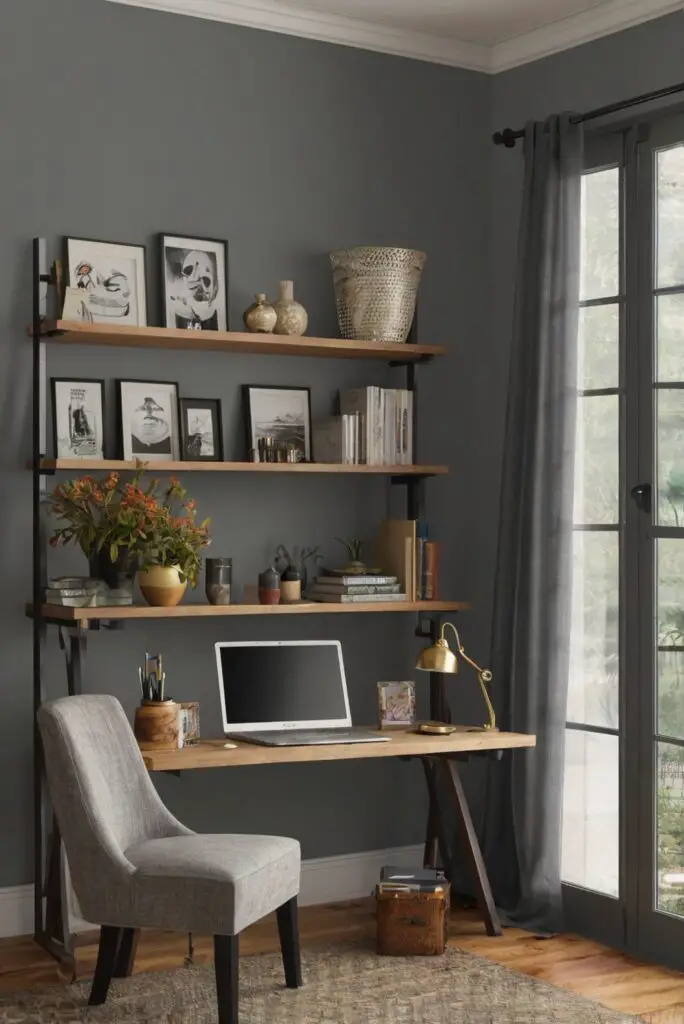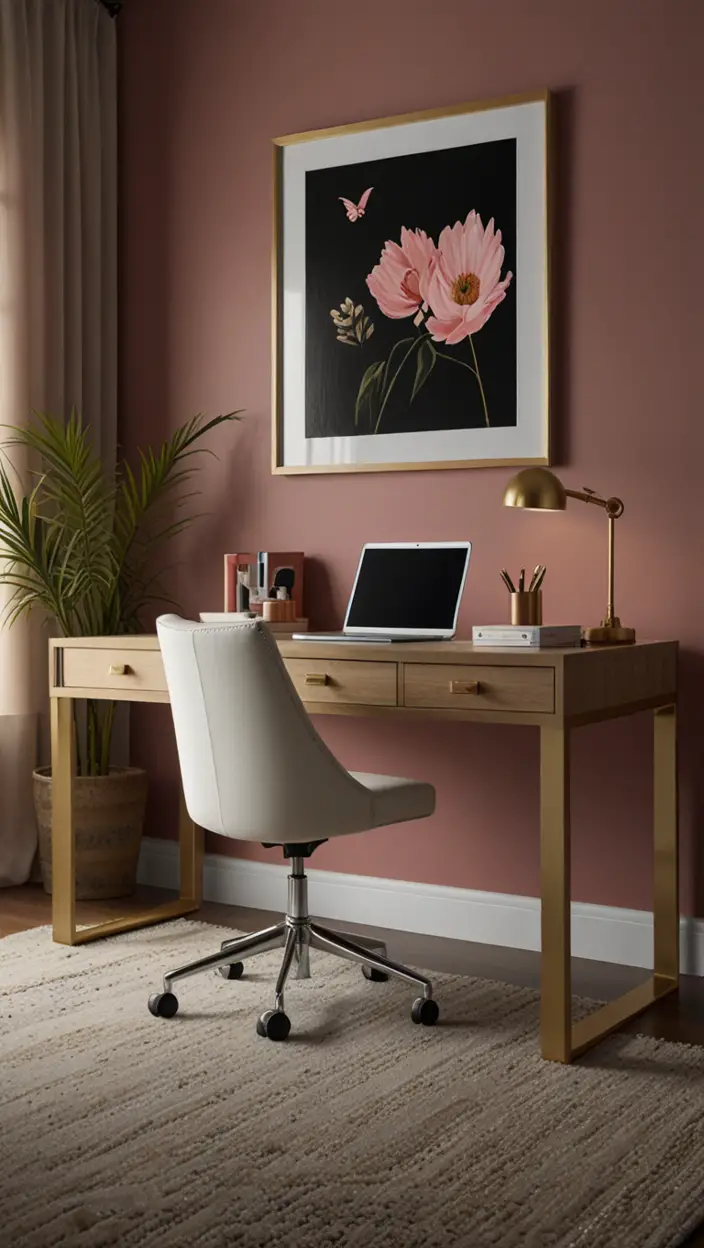Discover how to infuse your home office with vibrant cultural influences through a unique color palette. Upgrade your workspace today!
To incorporate cultural influences into your home office color palette, consider elements from your heritage or favorite cultures that resonate with you. Use colors commonly found in traditional textiles, artwork, or architecture of the culture. For example, if you’re drawn to Moroccan style, incorporate rich hues like deep blues, reds, and oranges. Use earth tones for a more rustic feel or vibrant colors for a bohemian touch. Consider the psychological impact of colors on productivity and mood in your workspace. Create a mood board or color palette to ensure coherence and balance in the design. Experiment with different tones and shades to find a harmonious combination that reflects your cultural influences.
Cultural influences play a significant role in designing a home office color palette as they can reflect your heritage, traditions, and personal style. Here are some valuable insights on how to incorporate cultural influences into your home office color palette effectively:
1. Choosing a Color Palette:
My Lovely Spring Paint for 2025
Ready for a Spring Makeover? Explore the Freshest 2025 Paint Trends!
White Sage/Green SW Pistachio green Soft blue Honeysweet/Orange Pink Sugar Sage Tint BMAs an Amazon Associate, I may earn a commission from qualifying purchases at no extra cost to you.
When selecting a color palette that incorporates your cultural influences, consider colors that hold symbolic significance in your culture. Research the meanings behind different colors in your culture and choose shades that resonate with you. You can also draw inspiration from traditional clothing, artwork, and architecture in your culture.
2. Common Cultural Color Schemes:
Some common cultural color schemes that can be used in a home office include:
– Earthy tones and natural hues in Native American-inspired palettes.
– Vibrant colors like red, orange, and gold in Asian-inspired themes.
– Rich jewel tones and intricate patterns in Middle Eastern-inspired designs.
– Pastel shades and intricate designs in European-inspired color schemes.
3. Mixing Cultural Influences:
You can absolutely mix different cultural influences in your home office color palette. However, ensure that the colors and patterns complement each other harmoniously. Look for common elements or color combinations that can tie different cultural influences together in a cohesive way.
4. Harmonious Complement:
My fAV Spring DECOR for 2025
Discover Spring’s Best 2025 Decor Combinations – Perfect for Any Room!
Oversized Indoor Plants White Curved Sofas Rugs BOH Brown Cream Moroccan Hype Boho Rug Outdoor Patio Furniture Sets Topfinel Pillow CoversAs an Amazon Associate, I may earn a commission from qualifying purchases at no extra cost to you.
To ensure that the cultural elements in your color palette complement each other harmoniously, consider creating a mood board or color scheme that combines different elements. Use neutral tones or accent colors to balance bold cultural patterns and hues for a visually pleasing result.
5. Incorporating Traditional Patterns:
You can incorporate traditional patterns or motifs from your culture into the color scheme of your home office through textiles, wallpaper, artwork, or decorative accents. Consider using traditional fabrics or wallpapers with intricate designs that reflect your cultural heritage.
6. Appropriate Colors for Cultures:
Certain cultures have specific colors that hold cultural significance. For example, red is considered auspicious in Chinese culture, while blue and white are prominent in Greek designs. Research color symbolism in your culture to choose colors that are appropriate and meaningful for your home office.
7. Avoiding Overwhelm:
To use cultural influences in your home office color palette without overwhelming the space, consider incorporating them in small doses. Use cultural elements as accents rather than dominating the entire color scheme. Balance vibrant cultural colors with neutral shades to create a harmonious and inviting workspace.
Additional Tips:
– Experiment with different shades and color combinations to find the right balance of cultural influences in your home office.
– Consider the psychological effects of colors on productivity and mood when choosing a color palette.
– Personalize your workspace with cultural artifacts, souvenirs, or artwork that reflect your heritage.
– Seek inspiration from design magazines, online platforms, or professional decorators to discover new ideas for incorporating cultural influences in your home office.
Key Takeaways:
– Research the symbolic meanings of colors in your culture before choosing a color palette.
– Mix different cultural influences by looking for common elements that tie them together.
– Use traditional patterns or motifs from your culture in textiles, artwork, or decorative accents.
– Balance bold cultural colors with neutral tones to create a harmonious workspace.
– Personalize your home office with cultural artifacts and artwork that reflect your heritage.






